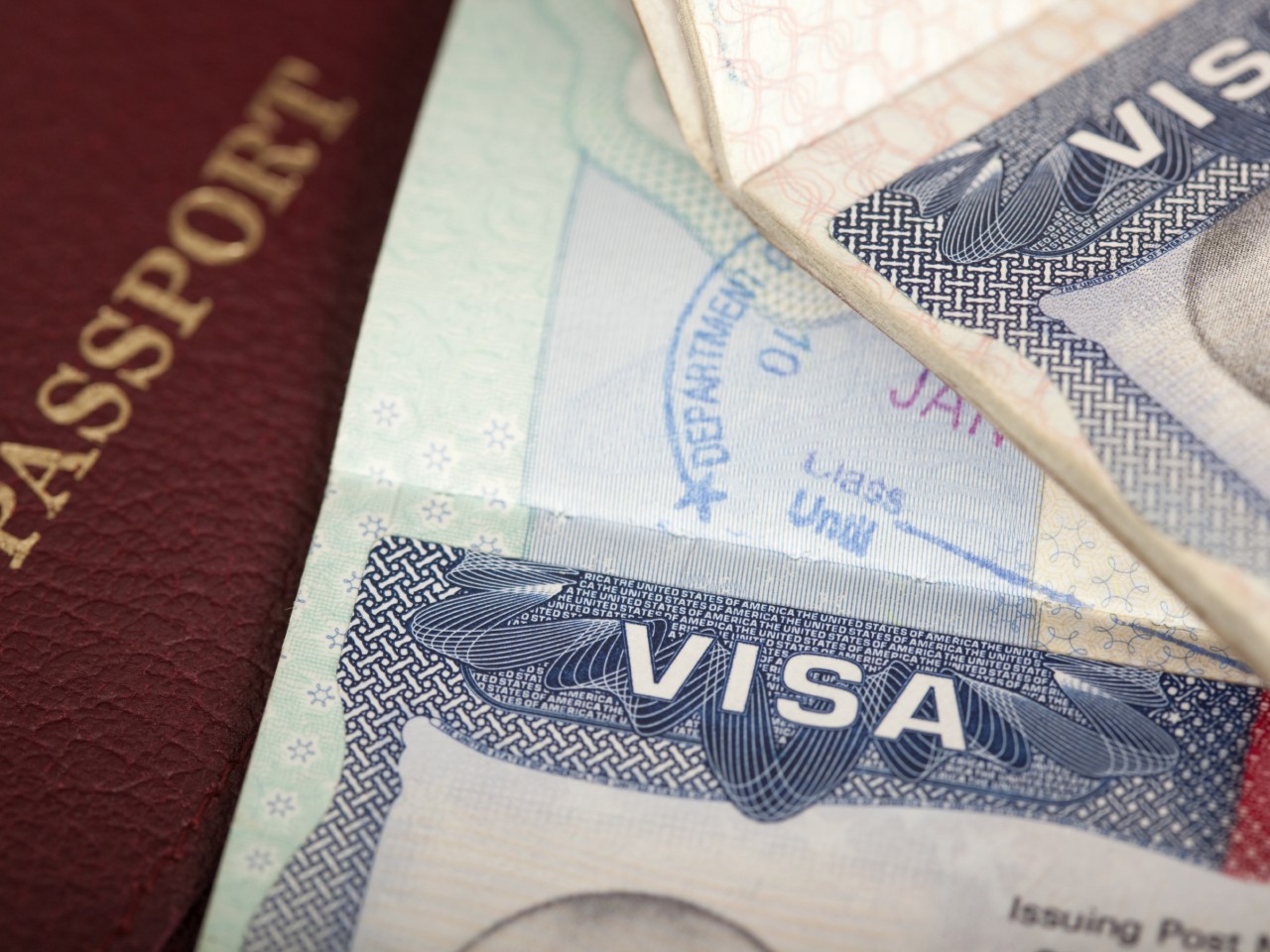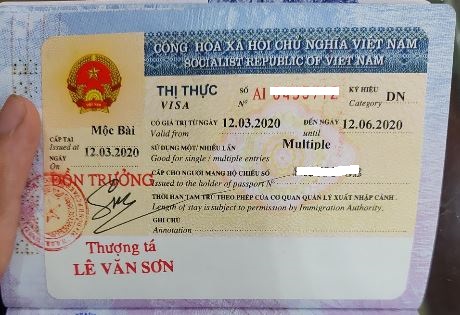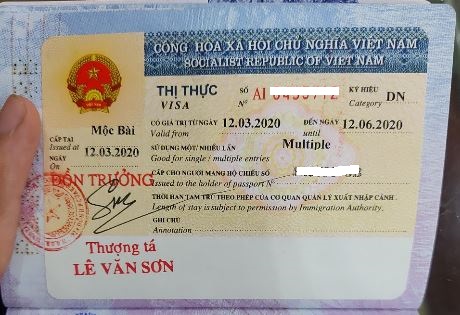As of August 15, 2023, the Vietnamese government has decided to issue electronic visas (e-visas) to citizens of all countries entering Vietnam. This move is part of a larger effort to make travel to Vietnam more accessible and convenient for visitors from around the world.
Table of Contents
E-Visa Entry Points
There are now 13 airports in Vietnam that allow foreigners to enter and exit with e-visas, including Noi Bai, Tan Son Nhat, Cam Ranh, Da Nang, Cat Bi, Can Tho, Phu Quoc, Phu Bai, Van Don, Tho Xuan, Dong Hoi, Phu Cat, and Lien Khuong. Additionally, there are 16 land border gates and 13 sea border gates that will also allow e-visa entries.
Temporary Stay Periods
The government has also decided to temporarily allow stays from 15 to 45 days for citizens of 13 countries that were unilaterally exempted from Vietnamese visas. These countries include Germany, France, Italy, Spain, United Kingdom, Russia, Japan, Korea, Denmark, Sweden, Norway, Finland, and Belarus. Regardless of passport type or entry purpose, citizens of these countries are now entitled to temporary stays of 45 days from entry date.
It’s important to note that this change comes after the National Assembly allowed increasing temporary stay periods for visa-exempt citizens to 45 days, compared to the 2014 Law on Entry, Exit, Transit and Residence of Foreigners in Vietnam.

E-Visa Validity
In June 2023, the National Assembly passed amendments to increase e-visa validity from 30 to 90 days. This gives travelers even more flexibility when planning their trips to Vietnam.
Benefits of E-Visas
The introduction of e-visas is a significant step forward for Vietnam’s tourism industry. E-visas make it easy for travelers to apply for visas online, from the comfort of their homes or offices. This eliminates the need for travelers to send their passports to embassies or travel agencies for visa processing.
E-visas are also more affordable than traditional paper visas. With an e-visa, travelers pay a fixed fee online and receive an electronic visa that they can print out and bring with them when they travel to Vietnam. This saves time and money for both travelers and the Vietnamese government.
Advantages of English
One of the benefits of this policy change is that all applications for e-visas will be in English. This makes the process easier and more accessible for travelers from around the world. English is widely spoken and understood in the international community, so this move will help make Vietnam even more welcoming to visitors.
In conclusion, Vietnam’s decision to issue electronic visas to citizens of all countries is a positive development for travelers and for Vietnam’s tourism industry. The new policy is designed to make travel to Vietnam more accessible, convenient, and affordable. By allowing temporary stays of up to 45 days for citizens of select countries and increasing e-visa validity to 90 days, Vietnam is positioning itself as a top tourist destination in Asia. Moreover, the convenience of applying for a visa online and the reduced processing time will undoubtedly be a major draw for travelers. The e-visa application process is simple, and applicants can receive their visas within days, if not hours, of submitting their applications.
It’s worth noting that Vietnam has seen a steady increase in tourism in recent years, with visitors from all over the world drawn to its rich culture, stunning natural beauty, and friendly people. In 2019, Vietnam welcomed more than 18 million foreign visitors, a record high. With the introduction of e-visas and other policy changes aimed at making travel to Vietnam easier and more convenient, it’s likely that this number will only continue to grow in the coming years.
In addition to the benefits for travelers, the new e-visa policy is also expected to have a positive impact on Vietnam’s economy. Tourism is a major contributor to Vietnam’s GDP, and the government has long recognized the importance of promoting the country as a tourist destination. By making it easier for travelers to visit Vietnam, the government hopes to boost tourism revenues and create more jobs in the industry.
Finally, it should be noted that while the new e-visa policy is a significant step forward for Vietnam’s tourism industry, there are still some limitations to consider. For example, e-visas are currently only available for single entry visits, meaning that travelers who plan to leave and re-enter Vietnam during their trip will need to apply for multiple visas. Additionally, there are certain restrictions on the types of activities that travelers can engage in while on an e-visa, such as employment or studying.
Overall, however, the benefits of the new e-visa policy far outweigh any potential limitations. By making travel to Vietnam easier and more affordable for visitors from around the world, Vietnam is positioning itself as a top tourist destination in Asia. With its rich history, vibrant culture, and breathtaking landscapes, there’s no doubt that Vietnam will continue to attract visitors for many years to come. Vietnam Issues E-Visas to Citizens of All Countries: A Game-Changer for Tourism
Vietnam’s new policy of issuing e-visas to citizens of all countries is a game-changer for the country’s tourism industry. With reduced processing times, simplified application procedures, and broader eligibility criteria, the new policy is expected to make travel to Vietnam easier and more affordable than ever before.
In this article, we’ll take a closer look at Vietnam’s new e-visa policy, its benefits for travelers and the economy, and some of the limitations that travelers should be aware of.

Vietnam’s New E-Visa Policy: What You Need to Know
Effective August 15, 2023, citizens of all countries will be eligible to apply for e-visas to enter Vietnam. The e-visa allows travelers to stay in Vietnam for up to 30 days, with the option to extend their stay for an additional 30 days after arrival. The visa is valid for entry through 13 airports, 16 land border gates, and 13 sea border gates.
To apply for an e-visa, travelers need to complete an online application form and pay a fee of $25 USD. The application requires a scanned copy of the applicant’s passport, as well as a recent passport-sized photo. Once the application is submitted, applicants can expect to receive their visa within three business days via email.
The new e-visa policy represents a major change from Vietnam’s previous visa regime, which required citizens of many countries to obtain visas in advance of travel. This often involved lengthy processing times, complicated application procedures, and high fees. By contrast, the e-visa application process is simple, fast, and affordable, making it an attractive option for travelers.
Benefits of Vietnam’s New E-Visa Policy
There are several key benefits of Vietnam’s new e-visa policy for travelers:
- Reduced processing times: The e-visa application process takes just a few days, compared to the weeks or even months that some visa applications can take.
- Simplified application procedures: The online application form is easy to complete, and applicants are not required to submit any additional documents other than their passport and photo.
- Broader eligibility criteria: With e-visas now available to citizens of all countries, more travelers will be able to visit Vietnam without the hassle of obtaining a visa in advance.
- Increased flexibility: The 30-day visa allows travelers to stay in Vietnam for an extended period, with the option to extend their stay for an additional 30 days after arrival.
These benefits are likely to make Vietnam an even more attractive destination for travelers from around the world. With reduced barriers to entry and a streamlined visa process, Vietnam is positioning itself as a top tourist destination in Southeast Asia.
Vietnam Issues E-Visa to All Countries Using English
Another significant change introduced by Vietnam’s new e-visa policy is that the application process will be conducted entirely in English. This is a major departure from the previous system, which required applicants to complete forms and submit documents in Vietnamese.
The switch to English is expected to make the application process easier and more accessible to travelers who do not speak Vietnamese. It also aligns with Vietnam’s broader push to promote the use of English as a second language, both in education and in business.
By using English as the language of e-visa applications, Vietnam is making it clear that it welcomes visitors from around the world and is committed to providing them with the best possible experience.

Impact on Vietnam’s Economy
The new e-visa policy is expected to have a positive impact on Vietnam’s economy, particularly in the tourism sector. In recent years, tourism has become increasingly important to Vietnam’s economy, contributing around 10% of the country’s GDP.
By making it easier for travelers to visit Vietnam, the government hopes to boost tourism revenues and create more jobs in the industry. The increased number of visitors is also likely to have a positive impact on other businesses such as hotels, restaurants, and transportation services.
Conclusion
Vietnam’s new e-visa policy represents a major step forward for the country’s tourism industry. By making travel to Vietnam easier and more affordable for visitors from around the world, Vietnam is positioning itself as a top tourist destination in Asia.
With its rich history, vibrant culture, and breathtaking landscapes, there’s no doubt that Vietnam will continue to attract visitors for many years to come. Whether you’re interested in exploring the cities, soaking up the sun on the beaches, or trekking through the mountains, Vietnam has something for everyone.
So why not start planning your trip today? With the new e-visa policy, it’s never been easier to experience all that Vietnam has to offer.Limitations of Vietnam’s New E-Visa Policy
While the new e-visa policy is undoubtedly a positive development for tourists, there are some limitations to consider:
- Single entry only: E-visas are currently only available for single entry visits, meaning that travelers who plan to leave and re-enter Vietnam during their trip will need to apply for multiple visas.
- Limited length of stay: E-visas allow travelers to stay in Vietnam for up to 30 days, with the option to extend for an additional 30 days after arrival. This may not be sufficient for travelers who wish to stay longer.
- Restrictions on activities: There are certain restrictions on the types of activities that travelers can engage in while on an e-visa, such as employment or studying. Travelers who plan to work or study in Vietnam will need to obtain the appropriate visa or permit.
- Technical glitches: Despite the convenience of online applications, technical glitches can still happen, causing delays or even rejection of applications. Therefore, it is essential to double-check all information before submitting your application and ensure that you have met all requirements.
It’s important for travelers to be aware of these limitations when planning their trips to Vietnam and to check the latest visa requirements before traveling.
